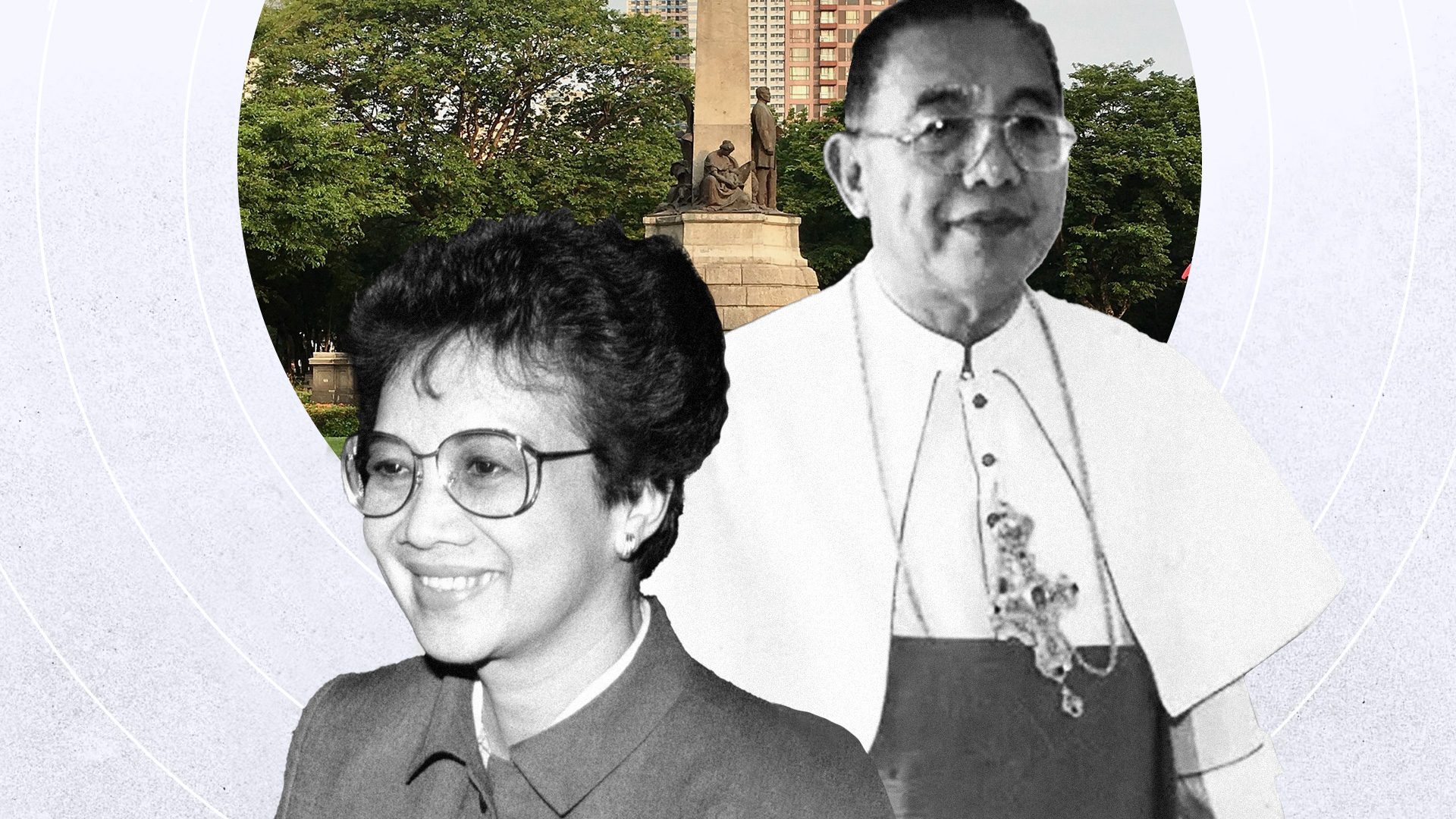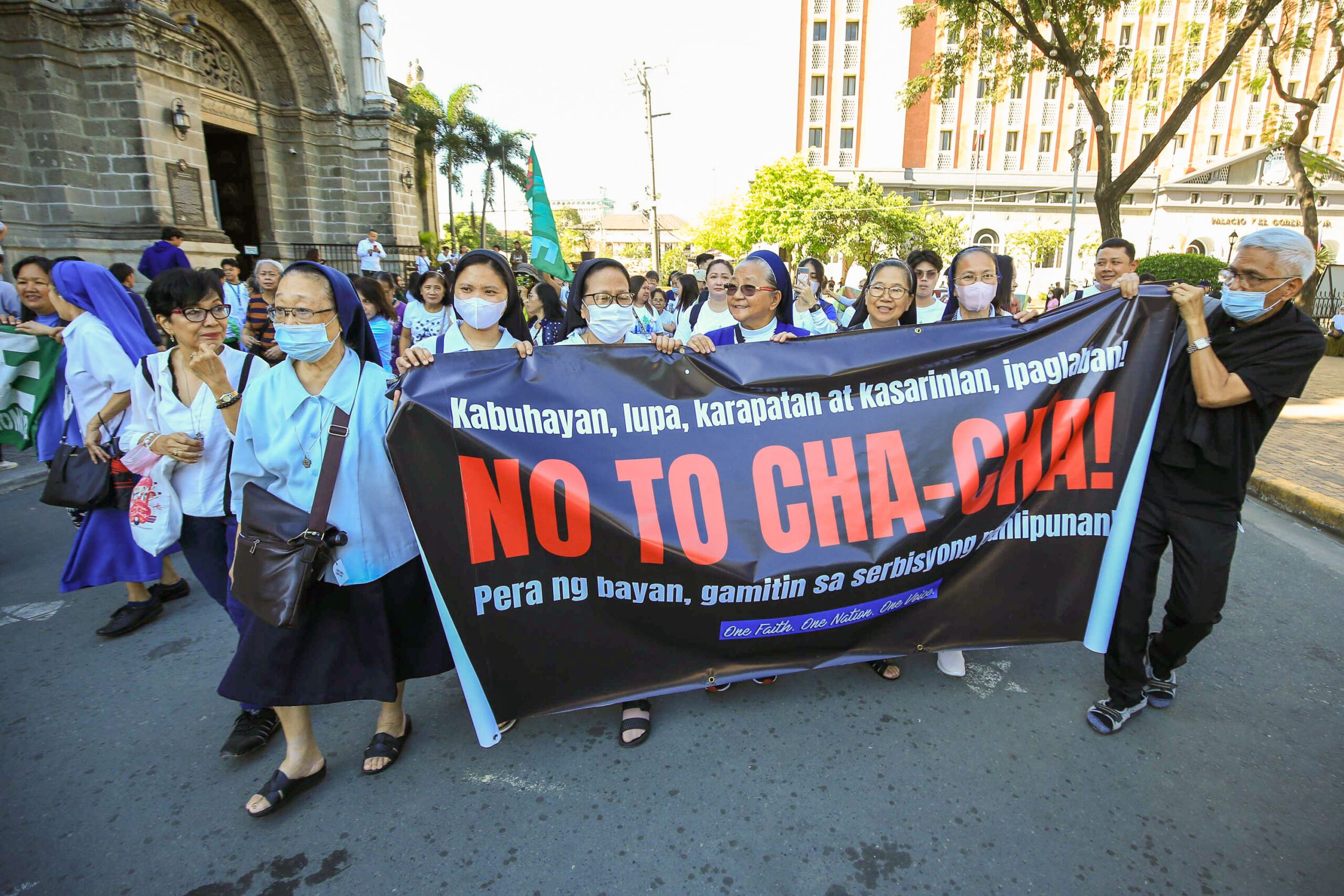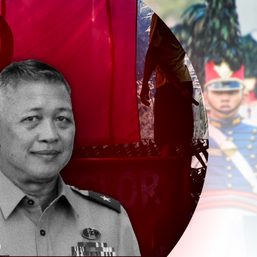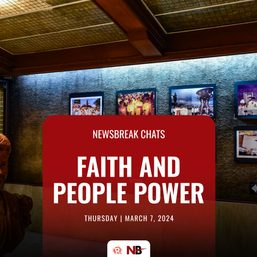SUMMARY
This is AI generated summarization, which may have errors. For context, always refer to the full article.

“A sleeping giant is awakened,” the New York Times declared back then.
It was September 21, 1997, and around half a million Filipinos flocked to Rizal Park, site of the biggest rallies against dictator Ferdinand E. Marcos, to wage a new battle.
Eleven years after the strongman’s downfall, Filipinos heeded the call of two democracy icons – former president Corazon Aquino and Manila Archbishop Jaime Cardinal Sin – to oppose moves to change the Constitution under Aquino’s successor, Fidel V. Ramos.
As in the People Power Revolution of February 25, 1986, Filipinos clutched their rosaries and chanted their protests at the same time, as Church and civil society groups formed a potent force against the powers that be.
The Luneta prayer rally of 1997 “was the largest public demonstration” since the EDSA revolt of 1986, the Chicago Tribune reported, as the event made headlines worldwide.
The combined forces of Aquino and Sin – and the use of prayer as protest, a powerful weapon in this Catholic-majority country – meant it was only a matter of time before Ramos relented.
Aquino, a devout Catholic, used religious imagery as she appealed to Filipino sensibilities.
“Today, there is a dark wind blowing across our country again… the wind of ambition, a gathering storm of tyranny,” Aquino said at the 1997 prayer rally against charter change, popularly known in the Philippines as Cha-Cha.
Referring to the “flame of freedom” that burned at EDSA, the former president added, “We are here to shield that flame so that the light of democracy will not go out in our country again.”
Aquino’s appeal to Ramos
Concluding her speech, Aquino directly addressed “the man I supported in 1992, my friend, our President, Fidel V. Ramos.”
Aquino and Sin supported different candidates in the 1992 presidential election, the first electoral exercise after the fall of Marcos. While Aquino backed her former military chief Ramos, Sin was said to have supported House Speaker Ramon Mitra Jr., a claim that he denied.
In an Easter pastoral letter, however, Sin had urged voters to choose candidates “who not only respect but also espouse” Catholic teachings, according to UPI. It was seen as a dig at Ramos, who would later become the Philippines’ first and, so far, only Protestant president.
Aquino told Ramos during the Luneta rally: “No work is ever finished, and good work is hard to let go. But you made your name in history even before you became President, when you joined the people’s fight for democracy, and stood by me in its defense.”
Aquino continued: “You will be remembered for the stability you established, for the economic progress you achieved; above all, for the confidence you restored in our country throughout the world. The downturn of the economy will pass, but the gratitude of the nation will abide for the man who raised it up and held it there.”
Saying Ramos has already done much for the country, she emphasized to her successor that “the real saviors of this country are the people and not any of us.”
“Trust the good people of our country to continue your good work. I trusted in you when my term was over. Trust in the Filipino,” Aquino said.
The day of the prayer rally, September 21, was also the 25th anniversary of the declaration of Martial Law under the Marcos dictatorship.
Sin: ‘I pray for him every day’
During the Luneta rally, Aquino also paid homage to Sin, whom she called “the godfather of Filipino freedom.”
It was Sin’s appeal on church-run Radio Veritas on February 22, 1986, that prompted Filipinos to flock to EDSA to protect rebel soldiers and, eventually, to stage a revolt against the Marcos regime. Sin, a native of Aklan and a former archbishop of Jaro, Iloilo, was also one of the staunchest critics of the Marcos dictatorship.

In his own speech, Sin reminded Filipinos of “‘the ear-popping, electric-shock, sexual-assault, cigarette-burning’ tortures of the Marcos era,” according to the Chicago Tribune.
“Let us pray for our president. I pray for him every day. I do not even pray for my own mother every day,” Sin said.
It was also eight months before the May 1998 elections that would elect Ramos’ successor, the second presidential election after the fall of Marcos. Sin said that Ramos “will not be a lame-duck president” if he “respects our newfound unity.”
Sin said that instead of changing the charter, Ramos should “turn around the downward trend of the economy, prepare for droughts caused by the effects of El Niño, safeguard the May elections, and address the problem of poverty.”
“It was the sort of advice that might have encouraged Ramos to snap at a news conference a few hours earlier: ‘I am still the president of the Philippines,’” the Chicago Tribune reported.
Ramos ended up stopping efforts to amend the charter, which would have lifted the single-term limit under the Constitution of 1987.
As quoted on the newspaper Today on September 20, a day before the Luneta rally, Ramos said: “I am not running for reelection. Period. Period. Period.”
Luneta rally ‘a turning point’
The late veteran journalist Amando Doronila, in his article “The Crisis of Succession” for the journal Public Policy, wrote in late 1997: “The unequivocal declaration helped defuse a looming confrontation between the Ramos government and a broad multisectoral coalition – led by Cardinal Jaime Sin, the politically influential Roman Catholic archbishop of Manila, and former president Corazon Aquino, Ramos’ immediate predecessor – that was opposed to tampering with the Constitution.”
Doronila pointed out that Ramos’ September 20 announcement, on the eve of the Luneta rally, “was clearly intended to defuse what the coalition had called a new demonstration of people power reminiscent of the People Power Revolution that deposed President Ferdinand Marcos in 1986.”
Doronila called the rally “a turning point for a disengagement between the regime and the popular coalition.”
“It demonstrated the capacity of the Church and Mrs. Aquino to mobilize people against perceived threats to political liberties, particularly against moves that appeared to lead to the return of the Marcos-style rule,” Doronila wrote.
He added, “The point was made: if the campaign orchestrated by officials close to President Ramos had gone ahead, it would have provoked political turbulence.”
A vastly different landscape
Fast-forward to the present day, or 27 years after the Luneta prayer rally of 1997, the son and namesake of dictator Marcos is now the Philippine president. Forces associated with Marcos and his cousin, House Speaker Martin Romualdez, are making another push for charter change.
As they did nearly three decades ago under Ramos, Church and civil society groups are working together again.
On Thursday, February 22, a coalition called Siklab – “Simbahan at Komunidad laban sa Cha-Cha” – marched in Manila to oppose charter change. Prominent convenors of the group include Kidapawan Bishop Jose Colin Bagaforo, Bishop Jonel Milan, former government peace adviser Teresita Quintos-Deles, and Senator Risa Hontiveros.

But the landscape is now vastly different: the opposition is weak or even nonexistent, the Catholic Church has lost much of its influence in politics, and the fear of the return of “Marcos-style rule,” to borrow a term from Doronila, is gone.
The President, after all, is now a Marcos.
Let the numbers serve as a reality check.
If Mass attendance is an indication of Church influence, for example, then the Church has truly lost much of its clout. From 64% in 1991, the percentage of Filipinos who go to Mass weekly has gone down to 38% as of December 2022, according to polling firm Social Weather Stations (SWS).
Public perception of Marcos has also been reversed through the years. From 52% in 1986, the percentage of Filipinos who believe Marcos was “a thief of the nation’s wealth” went down to 48% in 1995, then slipped to 38% in 2016, and went further below to 19% in 2022, the SWS reported.
Will the anti-charter change movement still succeed as it did under Aquino and Sin?
What will it take for such movement to prosper in the current political landscape?
Let’s have a deeper conversation in the #faith channel of the new Rappler Communities app. – Rappler.com
1 comment
How does this make you feel?
![[Newspoint] A Freedom Week joke](https://www.rappler.com/tachyon/2024/06/20240614-Filipino-Week-joke-1.jpg?resize=257%2C257&crop_strategy=attention)



![[Bodymind] Forgiveness, Enrile, and Bongbong Marcos Jr.](https://www.rappler.com/tachyon/2024/03/forgiveness-enrile-bongbong-march-6-2024.jpg?resize=257%2C257&crop=411px%2C0px%2C1080px%2C1080px)

![[The Wide Shot] Peace be with China](https://www.rappler.com/tachyon/2024/07/wideshot-wps-catholic-church.jpg?resize=257%2C257&crop=311px%2C0px%2C720px%2C720px)
![[OPINION] A critique of the CBCP pastoral statement on divorce](https://www.rappler.com/tachyon/2024/07/TL-cbcp-divorce-statement-july-19-2024.jpg?resize=257%2C257&crop=285px%2C0px%2C722px%2C720px)
![[REFLECTION] Mary, Mother of the West Philippine Sea](https://www.rappler.com/tachyon/2024/07/may-mother-west-ph-sea-july-19-2024.jpg?resize=257%2C257&crop=293px%2C0px%2C751px%2C750px)
![[OPINION] Ignorance and prejudice](https://www.rappler.com/tachyon/2024/07/tl-ignorance-and-prejujdice.jpg?resize=257%2C257&crop_strategy=attention)
So, former President Ramos tried to change the Philippine Constitution for his own interest. Former president Corazon Aquino and Manila Archbishop Jaime Cardinal Sin blocked his action. But these two heroes are gone to help us in the recent anti-Cha-Cha move. Hence, we would like to have new leaders for this present undertaking.